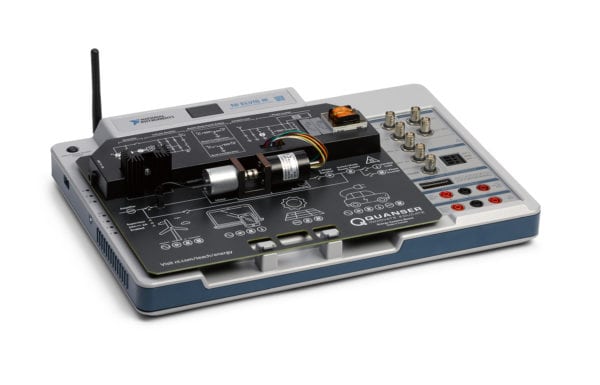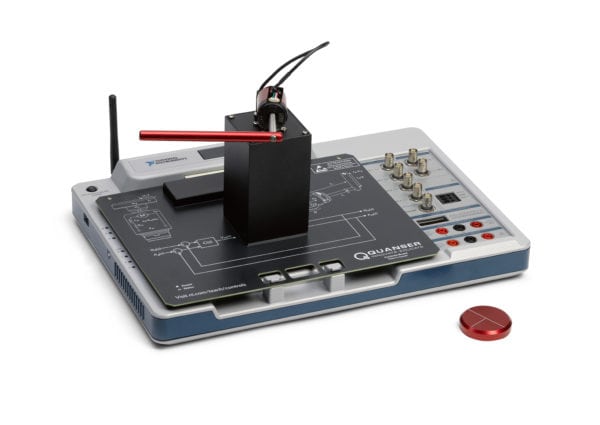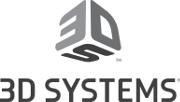Quanser Mechatronic Sensors Board
The Quanser Mechatronic Sensors Board introduces students to various sensors that measure pressure, strain, temperature, contact, distance, angular displacement, and dynamics. Included curriculum covers basic measurement techniques, theoretical performance, specifications, and common design considerations. Designed exclusively for the NI ELVIS III platform and LabVIEW™, the board also exposes students to industry-grade measurement and calibration fundamentals.
Quanser Mechatronic Actuators Board
A mechatronic system must, by its very nature, interface between electronic and mechanical components. When an electronic system manipulates a mechanical component, an actuator is necessary. Due to cost and dynamic constraints, the vast majority of actuators used in mechatronics consist of some form of rotary drive connected to an armature. The Quanser Mechatronic Actuators Board provides hands-on experience controlling and measuring the performance of the four most common actuator types: brushed DC motors, brushless DC motors, stepper motors, and servo motors.
Quanser Energy Systems Board
Power electronics have long been a cornerstone topic of electrical and electronic engineering. However, it is often difficult to interact with power systems and signals in a meaningful way because the voltages involved are often dangerously high. The Quanser Energy Systems board uses scaled down power systems to offer students a reasonable benchtop form factor. Despite the smaller size, the electrical design and dynamics of the circuits and signals involved remain analogous to the larger systems they represent.
Quanser Controls Board
As automation and connected devices move from industry to commercial products and the home, an understanding of the design and implementation of control systems on hardware is essential. The courseware progression that accompanies the Quanser Controls Board begins with a grounding in the basics of modeling and control. Topics then transition into more complex strategies including optimal control, hybrid control, and digital control.









